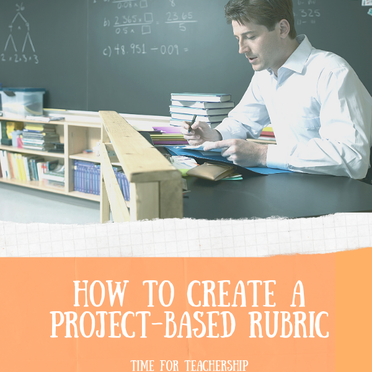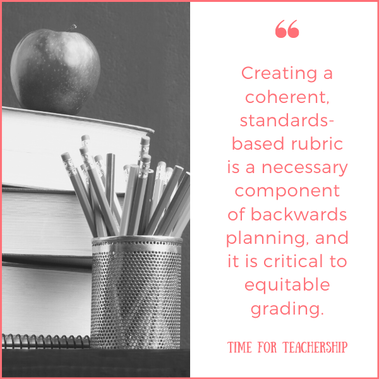|
As we continue our journey into justice-oriented unit design, we’re moving from how we spark engagement with a driving question to how we assess student mastery and offer standard-specific feedback. This post will address questions including: What kind of rubric should I use? How do I determine which standards will be assessed in this project? Do you have tips for using effective language in my rubric? What steps should I take to start building my rubric? Let’s take these questions one-by-one. What kind of rubric should I use? To do this well, we need a standards-based rubric. Holistic rubrics, or rubrics that just give one overall grade (as opposed to a specific grade for each standard being assessed) are less effective in advancing student learning and subject to increased grading bias. Specific feedback on each standard enables students to see where they are and where they need to go next. Ideally, the rubric should also be mastery-based, meaning it defines what different levels of mastery look like within each column of the rubric. Research found mastery-based grading resulted in a 34% increase in student achievement compared to traditional grading (Haystead & Marzano, 2009). Mastery-based rubric categories might include: approaching the standard, meets the standard, and above the standard. Alternatively, a single-point rubric could be used, which would list the standard in the center column, and have blank columns on either side (one for below or approaching the standard and one for above the standard) for students and teachers to write in their own language so they can specifically address the evidence of the students’ degree of mastery for each standard. If you’re interested in a mastery-based rubric template, I’ll re-share my free rubric templates below. How do I determine which standards will be assessed in this project? The rubric should be the result of backwards planning. (For more on backwards planning, see this post and this post.) This means you’ll want to identify the priority (i.e., most important) standards the project will assess. Your rubric should be given to students at the start of a project or unit so they know what they will be assessed on from the start. When choosing your priority standards, try to choose higher-order standards (e.g., DoK 3 and DoK 4). Do you have tips for using effective language in my rubric? Effective rubrics use language that focus on what students can do, rather than what they can’t do. This is particularly difficult in the below or approaching phase of mastery. I still struggle with this piece myself, but I’ve found it helpful to think about the supporting standards (e.g., DoK 1 and DoK 2) that are stepping stones students need to master before they are able to master the higher-order priority standard, and I try to use language that reflects evidence of these “stepping stone” standards. Language should also be clear and accessible to students. Rubric language should include all of the details required to make it clear to students what is being asked, but should include no more language than is absolutely necessary. To keep the document accessible to students, a rubric should be as short as possible. Finally, the language used across different levels of mastery (i.e., in each column) should be similar. This parallel language will make the rubric more coherent. What steps should I take to start building my rubric? Building a rubric is a lot of work. (Tip: I actually build one rubric for the whole year with all of my priority standards, and then delete standards if they are not to be assessed in a particular unit. This saves me a lot of time and provides students with consistent expectations.) Before doing anything else, choose which kind of rubric you will use (see earlier section on this question). Once you have chosen a rubric style, I would start with one priority standard. Read the standard as written, and then define what mastery looks like using similar language. This will be your meets standards category (or the middle category in a single-point rubric). Before you continue, review the language for clarity and student accessibility. Revise as needed. Once your meets standard column is all set, adapt the language for the mastery level above and below. Once the entire row of your first standard looks good, move on to the next standard. Creating a coherent, standards-based rubric is a necessary component of backwards planning, and it is critical to equitable grading. If you have additional rubric design tips, please share in the comments below or in our Time for Teachership Facebook group.
0 Comments
Leave a Reply. |
Details
For transcripts of episodes (and the option to search for terms in transcripts), click here!
Time for Teachership is now a proud member of the...AuthorLindsay Lyons (she/her) is an educational justice coach who works with teachers and school leaders to inspire educational innovation for racial and gender justice, design curricula grounded in student voice, and build capacity for shared leadership. Lindsay taught in NYC public schools, holds a PhD in Leadership and Change, and is the founder of the educational blog and podcast, Time for Teachership. Archives
May 2024
Categories |





 RSS Feed
RSS Feed